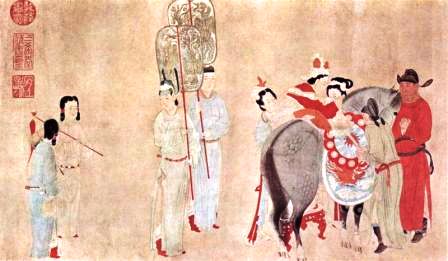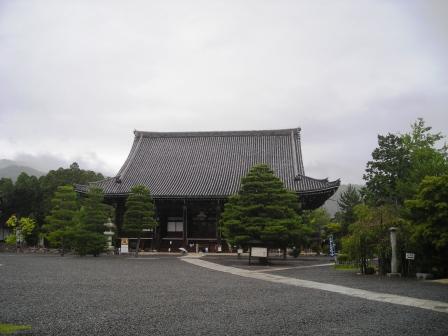
| Home | Chinatowns of the world | Festivals | Culture | Food Culture | History | Countries |
| Chinese Religion | Tours | Sitemap | Documentaries | About | Contact |
Yang Gui Fei, 杨贵妃 as YokihiYang Gui Fei, 杨贵妃, or Lady Yang was the consort of Tang Emperor who was forced to commit suicide during a mutiny in 756 CE. In Japan, Yang Gui Fei, is known as Yokihi. The Japanese believed that Lady Yang did not die in Mawei but had escape to Japan. One version claimed that she arrived by sea at Yamaguchi, 山口县, and died shortly afterwards. There is also a Lady Yang tomb in where the Japanese believed she was buried. Other versions claimed that Lady Yang participated in Japanese court life and even helped to suppress Japanese palace coups. In Kyoto, there are two temples related to Lady Yang. In 2002, the popular Japanese star, Yamaguchi Momoe, 山口百惠claimed that she was a descendent of Lady Yang. The backgroundWhen the Tang court ended the An Lu Shan rebellion, 安史之乱, Emperor Tang Ming Huang had already abdicated in favor of his son. When he returned to Chang an, Tang Ming Huang missed Lady Yang and had heard about her death in Japan. He instructed a general to send two Buddhist sculptures to the temple where she was buried. The General arrived in Japan but left the sculpture in another temple, Seiryoji, 清凉寺, in Kyoto. When the other temple heard about the incident, the two temples began negotiating about the two sculptures and even had to involve the Japanese Imperial Court. In another temple Sennyoji, 泉涌寺, in Kyoto, they claimed to have a sculpture of Lady Yang as a guan yin, 杨贵妃观音. This sculpture is now classified as a national treasure. So did Lady Yang Gui Fei die at Mawei 马嵬坡or did she escape to Japan?Most of the modern day theories regarding her escape to Japan were based on analysis and creative interpretation of Bai Juyi’s Song of Eternal Sorrow, 长恨歌. Rumors of Lady Yang’s escape were believed to have been circulating in Tang China so Bai Juyi’s poem could have been inspired by these rumors. On the other hand, historians also believed that Bai Juyi used Lady Yang and Tang Ming Huang’s love story as a backdrop for his own love tragedy. The popularity of Lady Yang’s story in Japan is certainly related to the popularity of Bai Juyi’s poems during a period when Chinese culture was transmitted to Japan. Lady Yang’s story is believed to have inspired part of the famous Japanese novel Tale of Genji There is almost no way to prove conclusively if Lady Yang died in Mawei or escaped to Japan. What is certain is how her tragic love story continues to capture people’s imagination for more than a thousand years. Maybe it shows a fascination for the lifestyle and love affairs of the “rich and famous”. Related articles: Yang Gui Fei, 杨贵妃Sennyu Ji, 泉涌寺, KyotoHistory page |
|
| Join us on | Youtube | |||
| Copyright © 2007-24 Chinatownology, All Rights Reserved. | ||||







